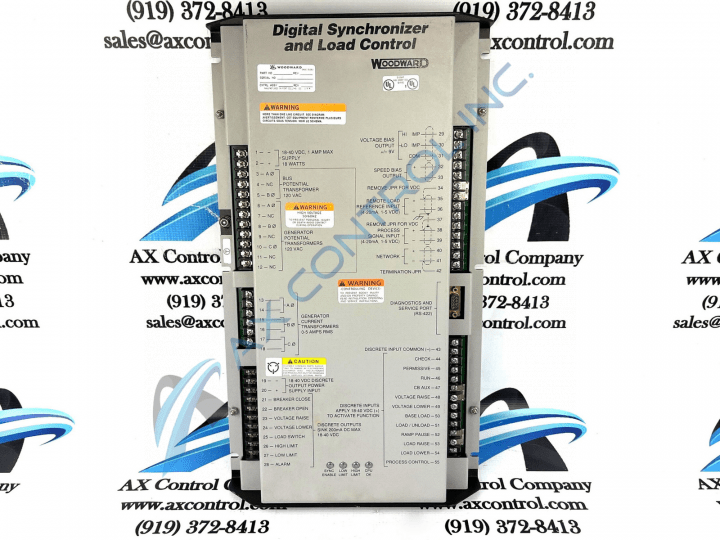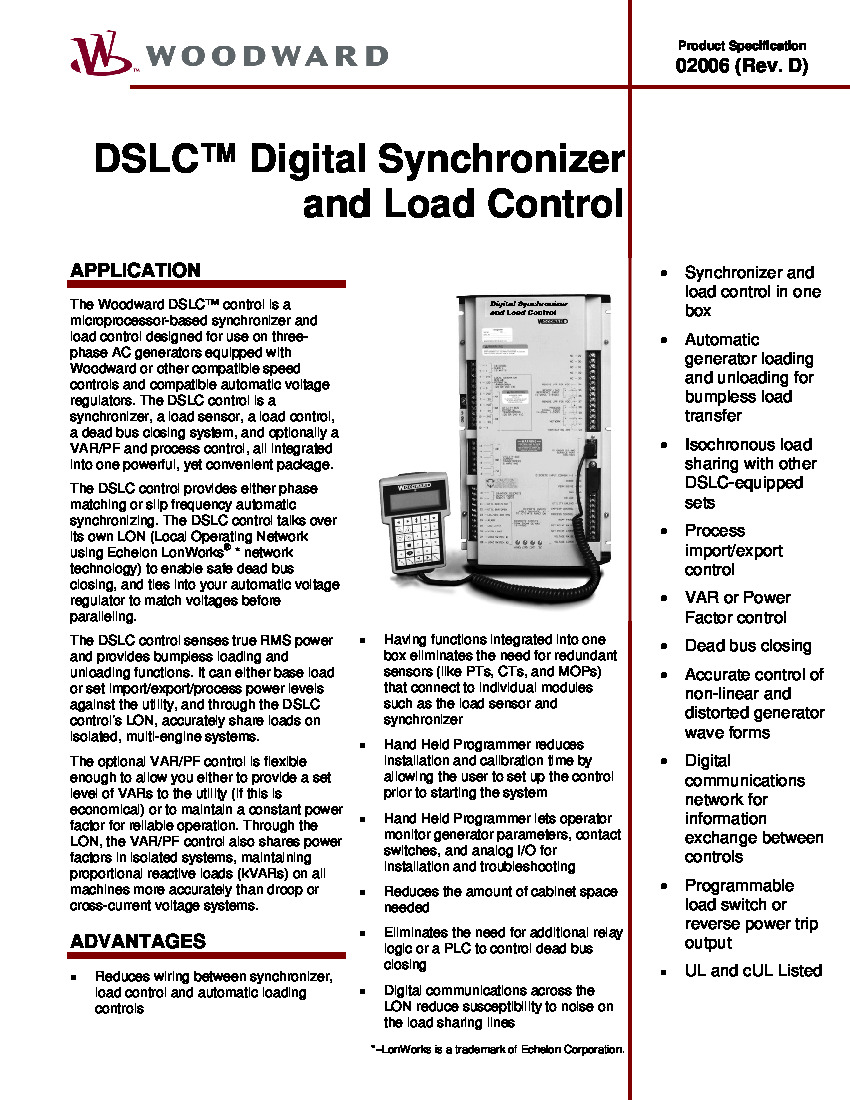About the 9905-709
This unit is a Woodward DSLC Digital Synchronizer and Load Control unit, part number 9905-709. This part is a microprocessor-based control for paralleling, synchronizing, loading, and unloading three-phase generator sets. It is designed for use with a Woodward speed control and an automatic voltage regulator (or another compatible device). Model 9905-709 does not have power factor control or process control functions, as it is one of the reduced upgrade level models in this Woodward series.
A few of the 9905-709 functions include:
- Built-in diagnostics
- Setup, metering, and diagnostic capability through a handheld programmer terminal
- Automatic generator loading and unloading
- Droop, base load, and isochronous load control capability
- Reverse power relay.
The 9905-709 DSLC has an input voltage rating of 240 Vac and a speed bias of 1-5 Vdc. This Open Delta PT Configuration unit is rated for operating temps from –40 to +70 °C (-40 to 158 F) and storage temps from –55 to +105 °C (-67 to 221 F).
Model 9905-709 offers either phase matching or slip frequency synchronizing. Actual slip frequency and breaker delay values are used to anticipate a minimum phase difference between generator and bus at actual breaker closure for both methods. There is an automatic dead-bus closure function on this control, where only one DSLC control is granted dead-bus closing permission through locking techniques over the communications network.
Additional synchronizer features that may be enabled or disabled during setup include:
- Time-delayed automatic multi-shot reclosing
- Voltage matching
- Auto-resynchronizing
- Synchronizer timeout alarm
To protect against static damage, certain precautions should be followed when working with or near this unit, such as touching and holding a grounded metal object (pipes, cabinets, equipment, etc.) to discharge the static electricity on your body to the ground before doing maintenance on the DSLC, wearing natural fiber clothing while performing maintenance on the part, and keeping plastic, vinyl, and Styrofoam materials away from the control, the modules, and the work area as much as possible.













